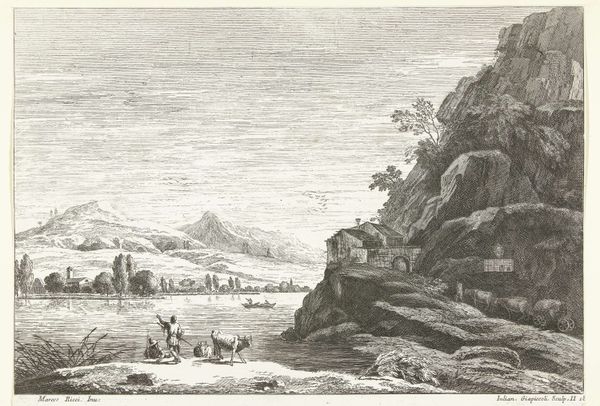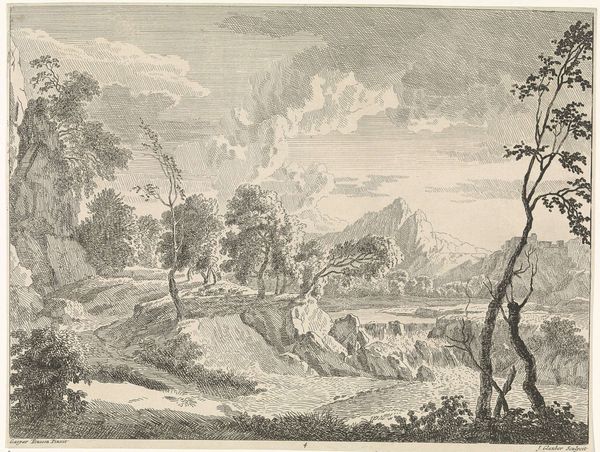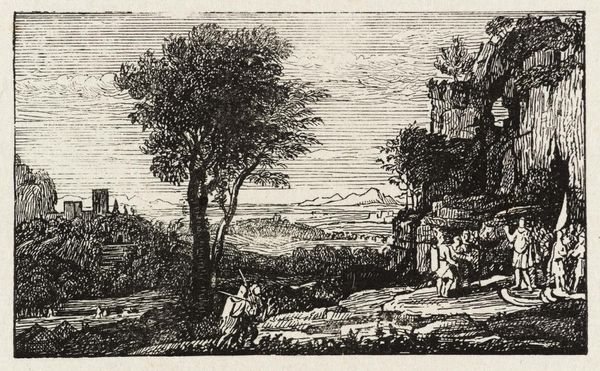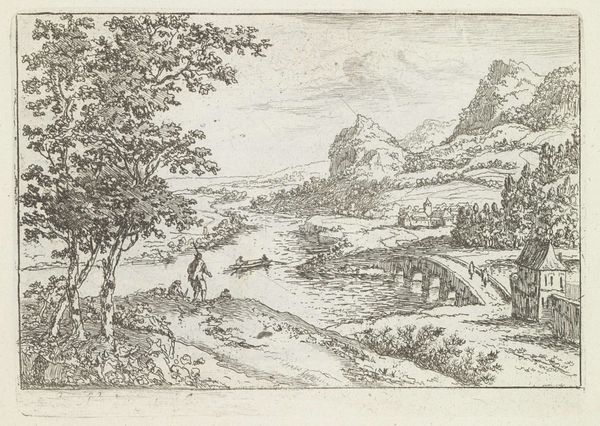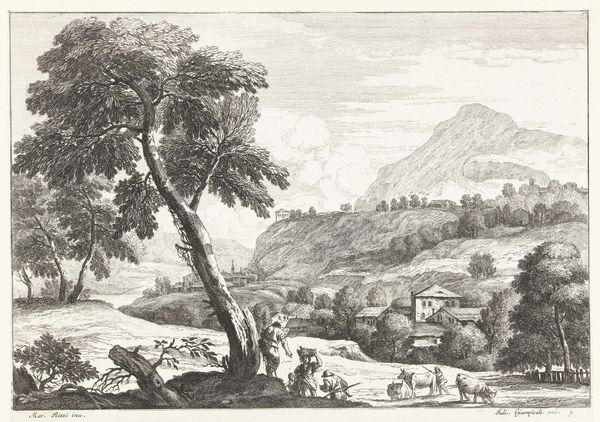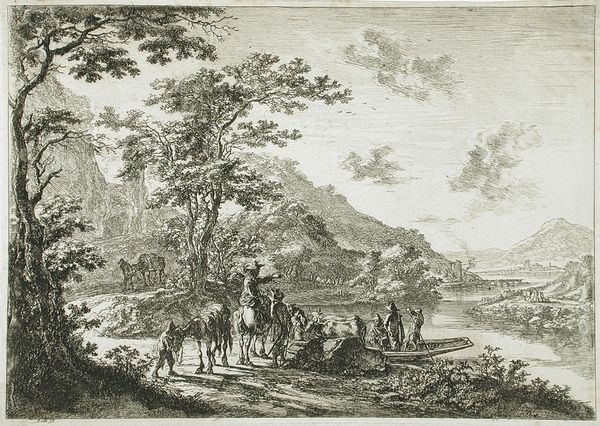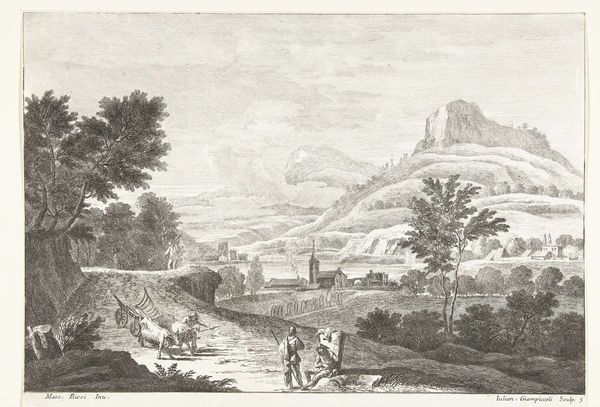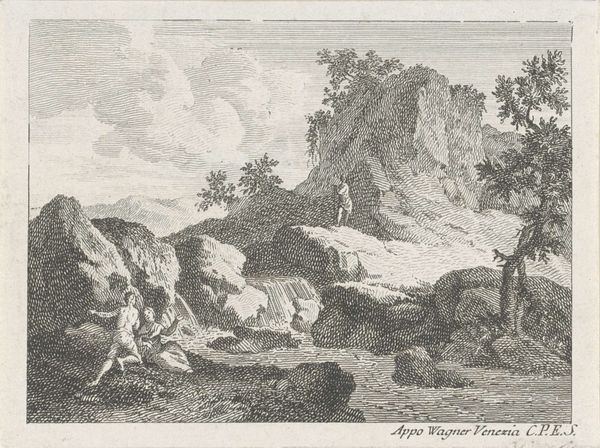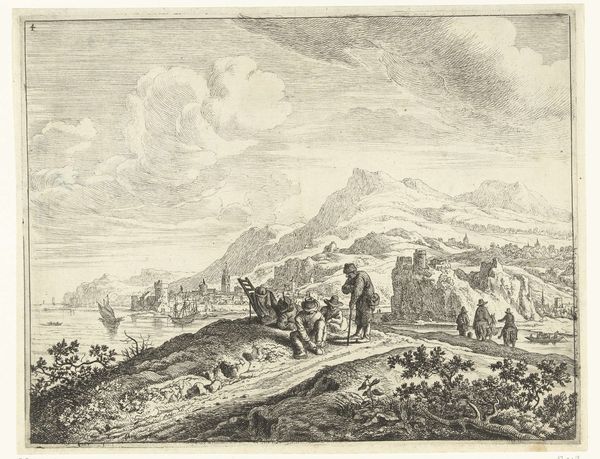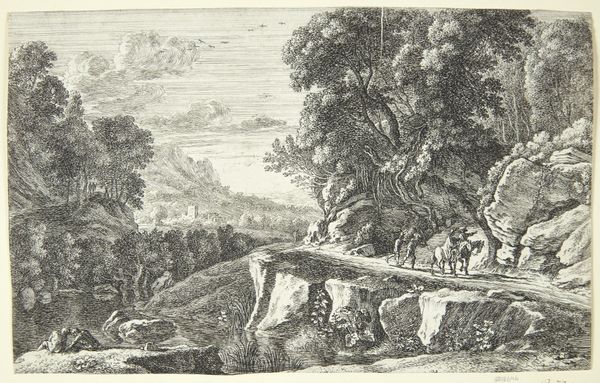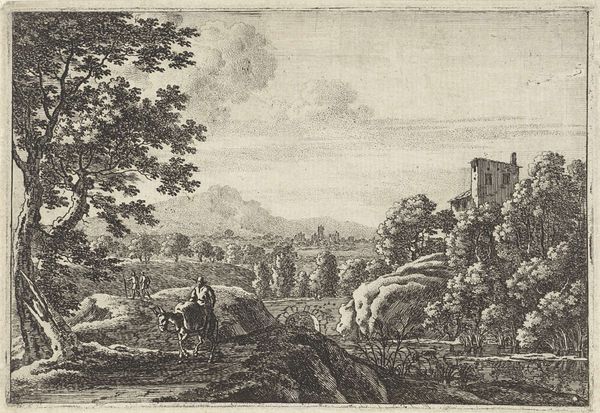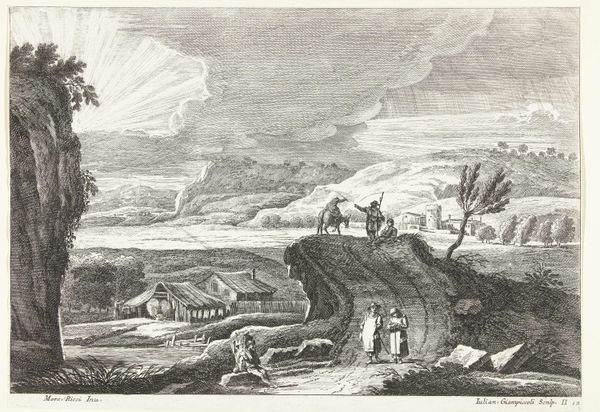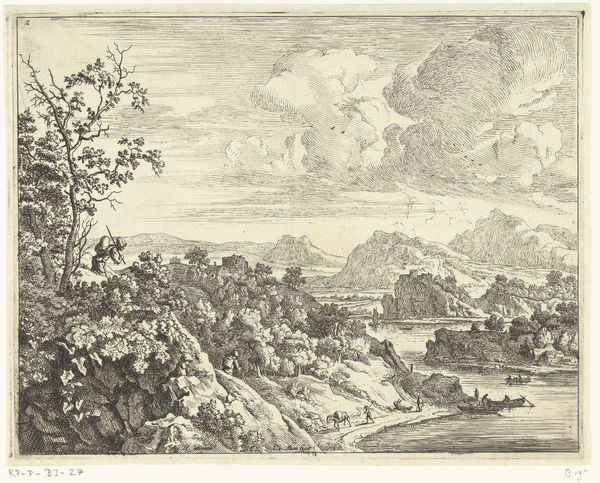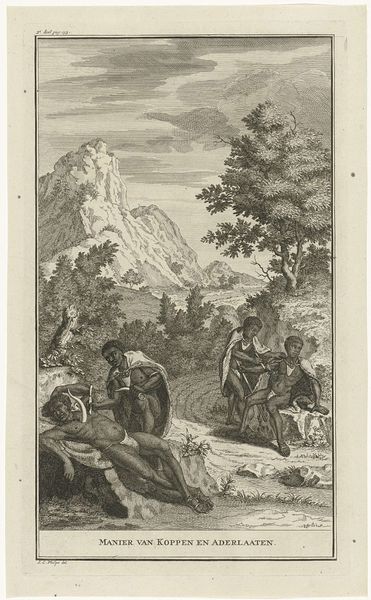
drawing, print, etching, ink
#
drawing
#
ink drawing
#
baroque
# print
#
etching
#
landscape
#
ink
#
pen-ink sketch
Dimensions: height 248 mm, width 349 mm
Copyright: Rijks Museum: Open Domain
Curator: Looking at "Landschap met begrafenisstoet," a work made between 1739 and 1740 by Giuliano Giampiccoli, I’m struck by the powerful social commentary embedded within its seemingly pastoral scene. Editor: My immediate feeling is of somber reflection, seeing how death is presented within the cycles of life. It is a small etching and ink work, but a sense of a grand scale landscape is definitely there. Curator: The procession itself is rendered with meticulous detail, inviting questions of status and religious performance within that era's society. Who were these people, and what did their rituals communicate about their understanding of life, death, and community? Editor: Absolutely. Funeral processions often act as a stage for displaying social rank, so the symbolic language inherent here fascinates me. Think of the visual cues: the garments, the order, the banners they carry –each detail resonates within a shared visual vocabulary of the time. What I see immediately is how these processions through time and across culture show similarities when it comes to conveying power relations within communities. Curator: Exactly. There’s also the environmental element. Giampiccoli juxtaposes this moment of death with this sweeping landscape. Considering baroque conventions, do you see any underlying connection with colonial expansion that may add another layer of analysis when reading into this scene? Editor: Well, the dramatic light cutting through the clouds may function beyond mere aesthetics. Such effects in landscapes from this era often echoed themes of divine intervention or fate, suggesting the inescapable reality of mortality. This etching seems steeped in this same symbolic visual tradition of fleeting life in the landscape. Curator: The symbolism within that environment becomes a visual signifier. Perhaps we should see the mountains beyond and the village nearby as the silent spectators and judge to human drama. Editor: Agreed, viewing it this way offers a wider perspective beyond its historic setting and reveals more nuanced social connections. Curator: Seeing it that way has shifted how I see the impact this etching leaves. Editor: Me too; these images reveal much about how humanity has tried to put meaning into the ephemerality of our existence through social rituals and cultural iconography.
Comments
No comments
Be the first to comment and join the conversation on the ultimate creative platform.
